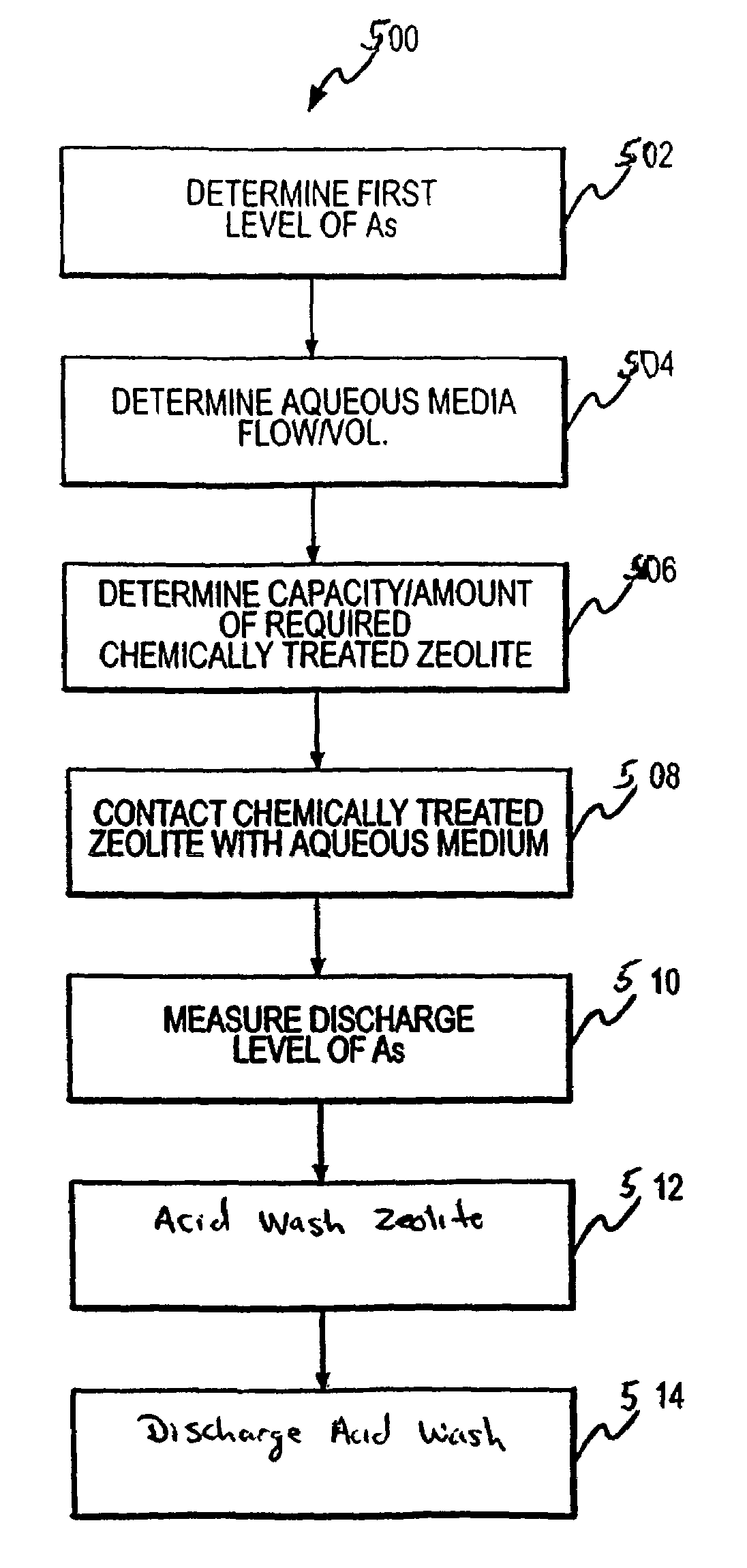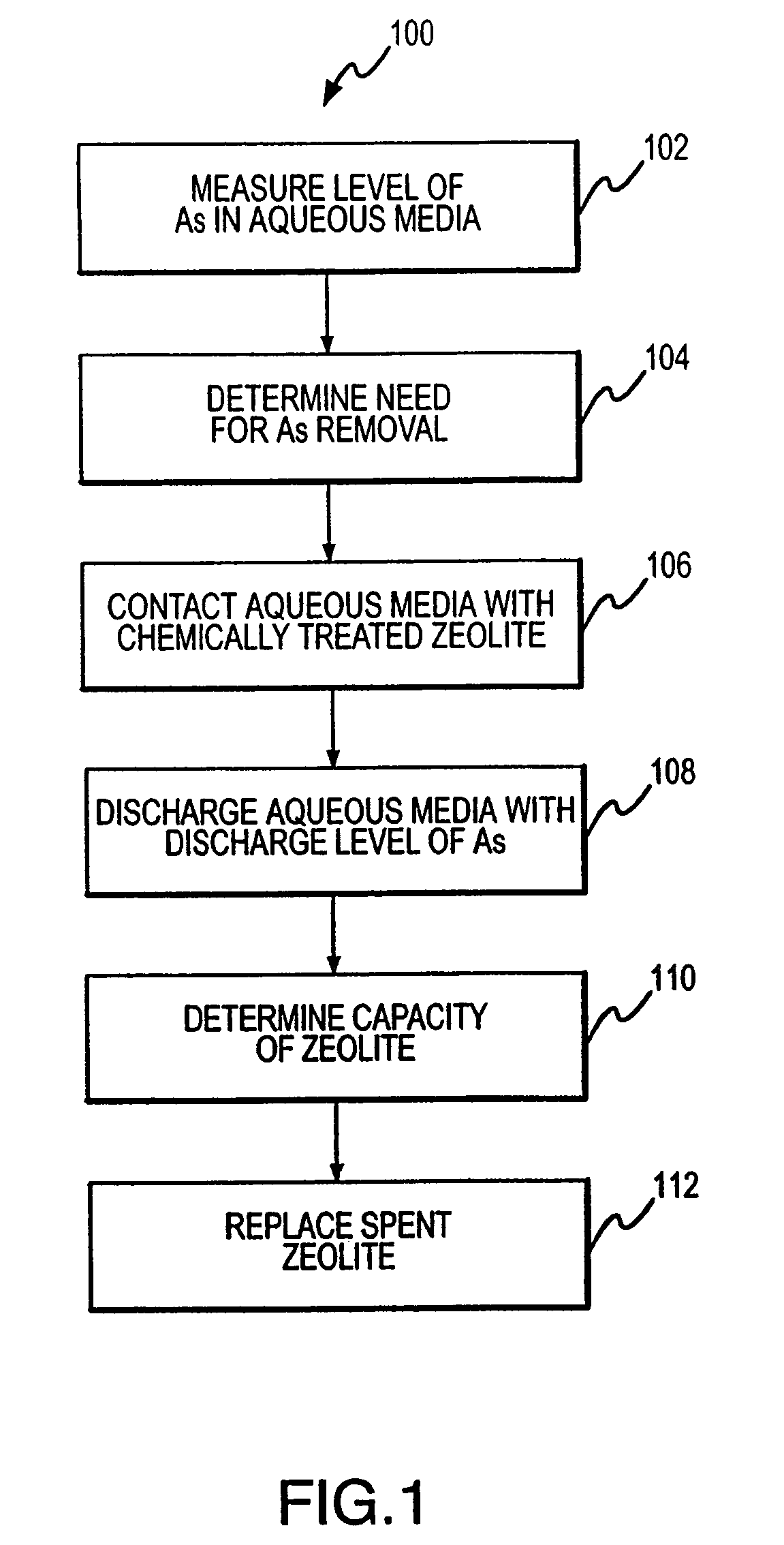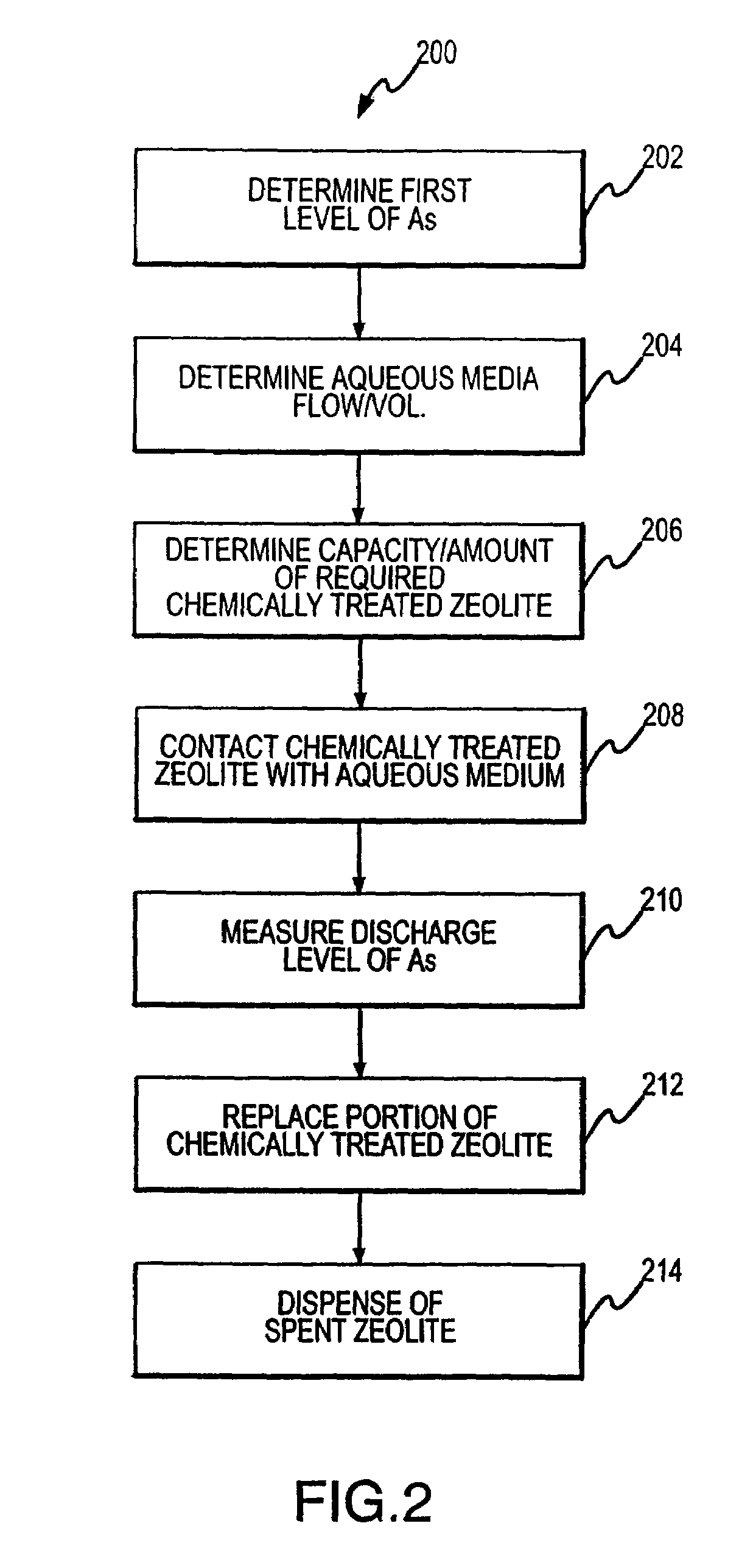Regeneration of chemically treated zeolite
a technology of chemical treatment and zeolite, which is applied in the direction of water/sewage treatment by ion exchange, other chemical processes, separation processes, etc., can solve the problems of limited ability to maximize fresh water use, increased pollution of fresh water supplies, and human health risks, so as to increase the maximum loading capacity of zeolite, enhance or facilitate further loading and optimize the working capacity of chemically treated zeolite materials
- Summary
- Abstract
- Description
- Claims
- Application Information
AI Technical Summary
Benefits of technology
Problems solved by technology
Method used
Image
Examples
example 1
Preparation of Ferric-Loaded Zeolite
[0098]The data shown in FIG. 6, illustrates one embodiment for preparing a chemically treated zeolite in accordance with the present invention. Three thousand pounds of ferric form zeolite was prepared by charging two, 24 inch diameter columns each with 1500 pounds of 8×40 mesh zeolite. Two hundred fifty pounds commercial ferric sulfate (0.9 meq / g zeolite) was dissolved in 4700 pounds water (560 gallons) and circulated up-flow through the columns for 48 hours. After 48 hours, the solution containing 3.5 g / L iron at 2.25 pH was drained from the columns and discarded. Approximately 0.6 meq Fe / gram was loaded onto the zeolite.
[0099]A second volume of solution was prepared by dissolving 390 pounds commercial ferric sulfate (1.4 meq Fe / g zeolite) in 4700 pounds water. This solution was circulated through the columns for approximately 48 hours. The solution pH of 1.8 was raised to 2.1 by the addition of sodium hydroxide. After 48 hours the solution cont...
example 2
Ferric-Loaded Zeolite Removes Arsenic with High Capacity
[0102]The data shown in FIGS. 7A-7C, were obtained by running the following fixed column test (continuous flow configuration):
[0103]A series of two, 250 ml burets, were set-up in series, where each buret contained approximately 200 ml of ferric-loaded zeolite. Note that a small wad of glass wool was inserted into the bottom of each buret prior to the addition of the ferric-loaded zeolite. A solution reservoir was connected to the bottom of the first buret using a Masterflex pump.
[0104]A solution containing 10 gallons of tap water, 0.16 grams sodium arsenate (dibasic, heptahydrate), and 7.4 grams calcium chloride was prepared. The solution was pumped slowly up-flow through the ferric-loaded zeolite and collected at discharge for analysis. Discharge was analyzed for arsenic levels.
[0105]The data illustrated in FIG. 7, show that ferric-loaded zeolites are extremely effective in removing arsenic from aqueous medium. FIG. 7C represe...
example 3
Other Metal Ions Load Effectively onto Zeolite
[0106]Preparation of loaded-zeolite materials was as described previously (above), except, that 50 grams of zeolite was contacted overnight in a beaker having water solutions as shown in Table 2. Each solution was mechanically stirred for a period of from 1 to 16 hours.
[0107]
TABLE 2Arsenic Absorption Using Barium, Aluminum,Calcium, Ferric And Ferrous-Loaded ZeolitesPurpose:Evaluate Ba, Al, Ca, Fe++, and Fe+++ forms of zeolite forarsenic removal from waterProcedure:Contact 50 gram portions of zeolite overnight in watersolutions of the above to convert them to the respective forms.Add 2 meq / gram1Use12.2 grams BaCl2.2H2Oin 500 ml water2Use11.1 grams A12(SO4)3.18H2Oin 500 ml water3Use11.8 grams CaNO3.4H2Oin 500 ml water4Use13.9 grams FeSO4.7H2Oin 500 ml water5Use 9.4 grams Fe2(SO4)3.xH2Oin 500 ml waterSieve solutions to recover zeolite and rinse zeolite with water. Discardsolutions.Contact each zeolite aliquot overnight with 3 liters deminer...
PUM
| Property | Measurement | Unit |
|---|---|---|
| temperature | aaaaa | aaaaa |
| temperature | aaaaa | aaaaa |
| diameter | aaaaa | aaaaa |
Abstract
Description
Claims
Application Information
 Login to View More
Login to View More - R&D
- Intellectual Property
- Life Sciences
- Materials
- Tech Scout
- Unparalleled Data Quality
- Higher Quality Content
- 60% Fewer Hallucinations
Browse by: Latest US Patents, China's latest patents, Technical Efficacy Thesaurus, Application Domain, Technology Topic, Popular Technical Reports.
© 2025 PatSnap. All rights reserved.Legal|Privacy policy|Modern Slavery Act Transparency Statement|Sitemap|About US| Contact US: help@patsnap.com



